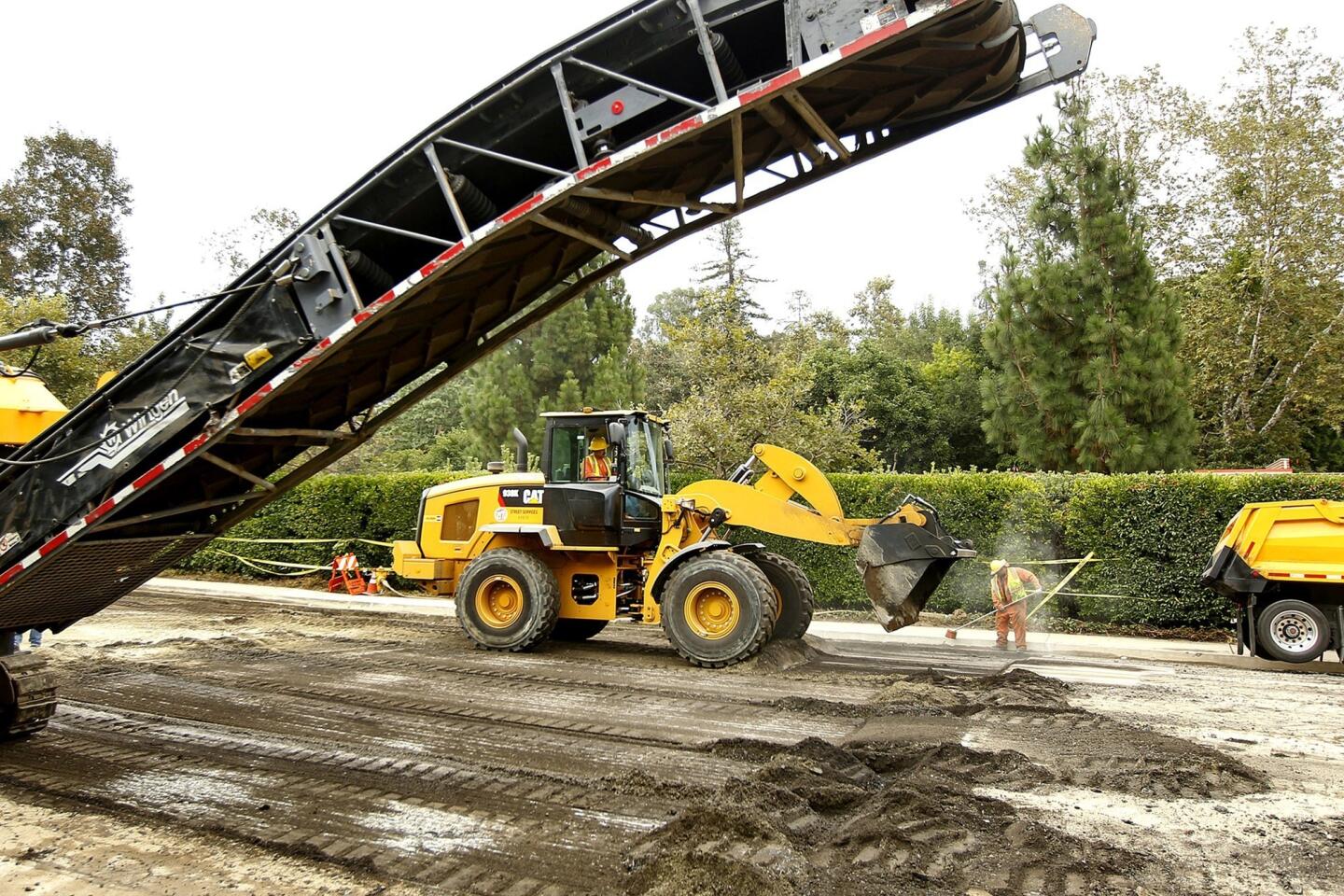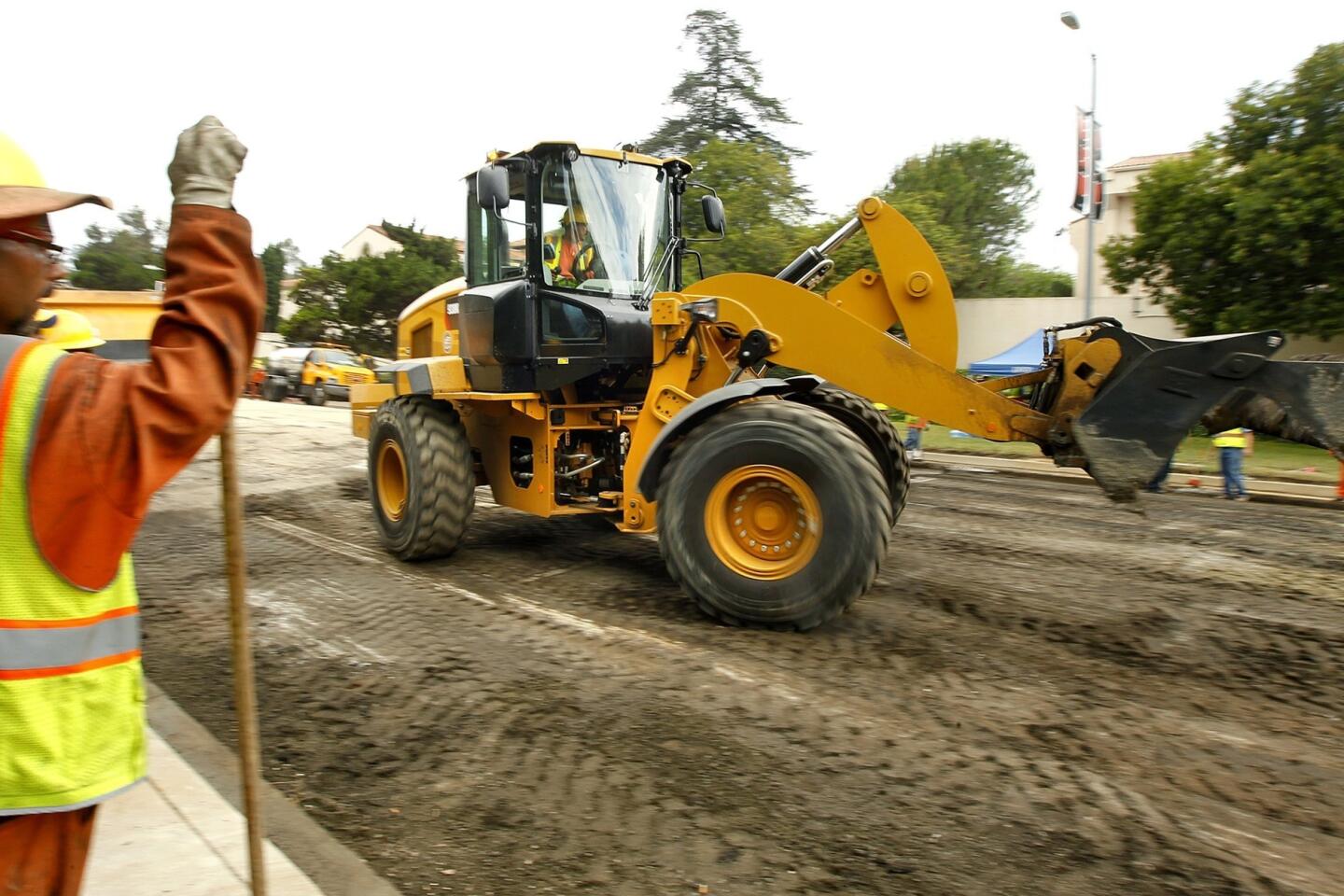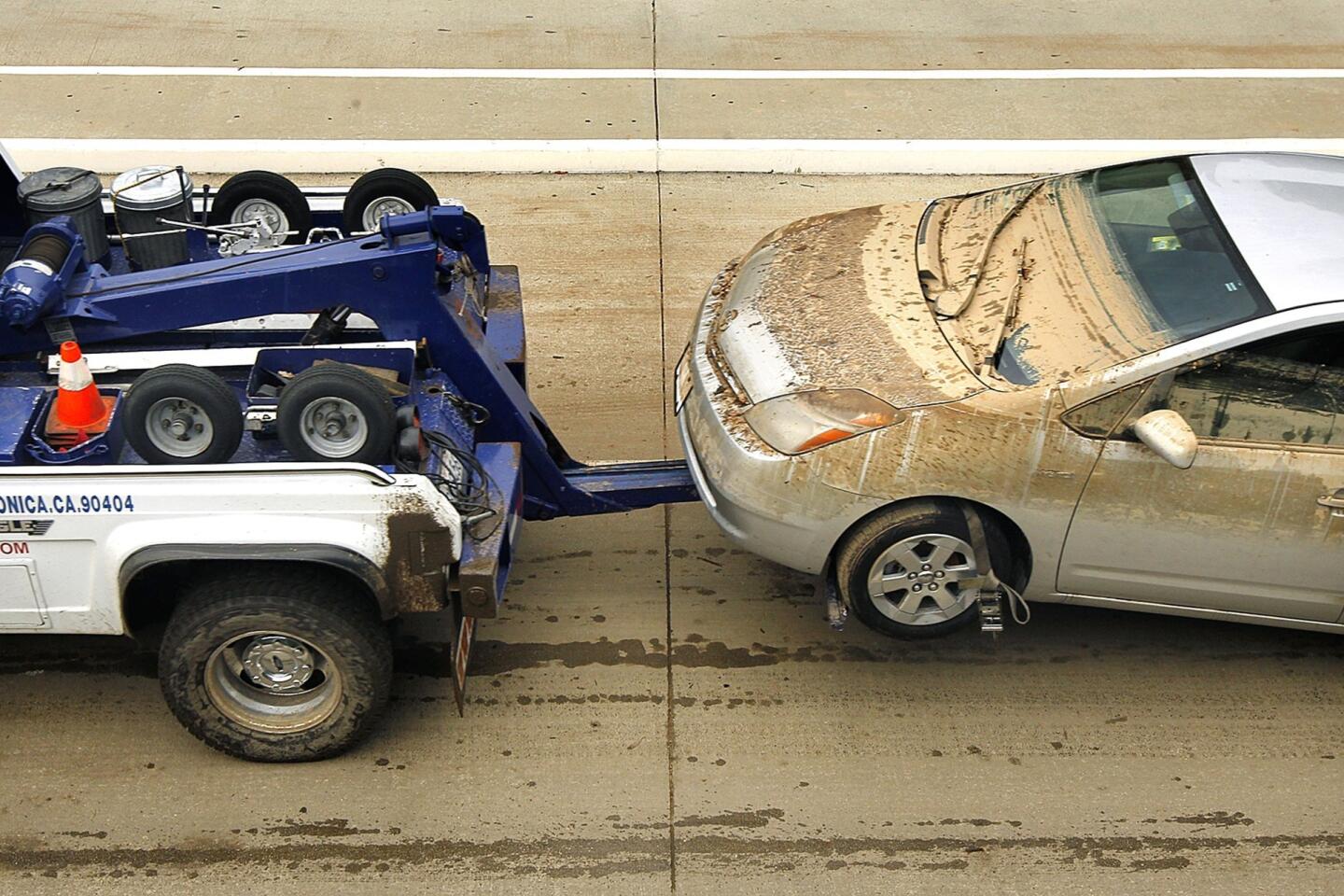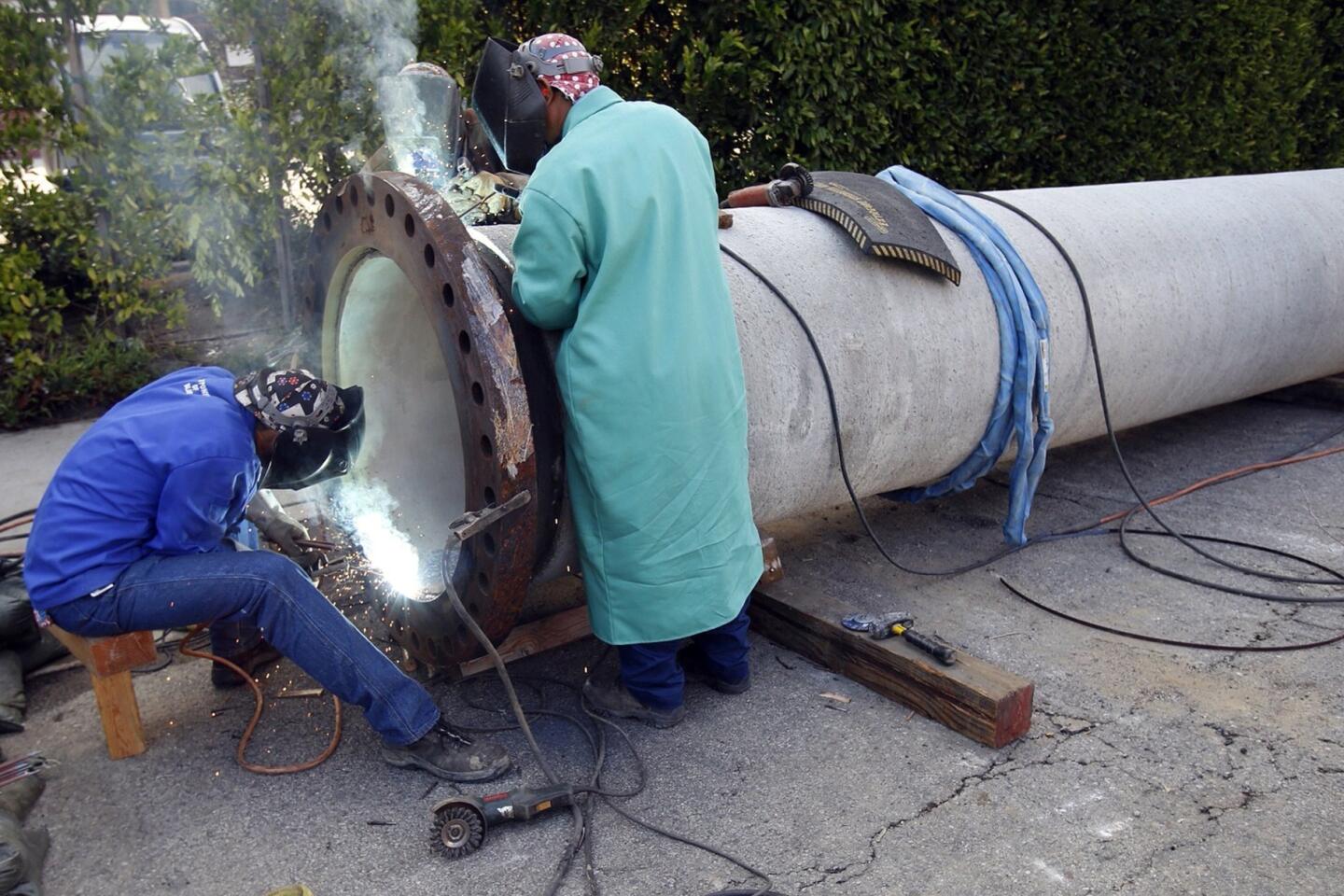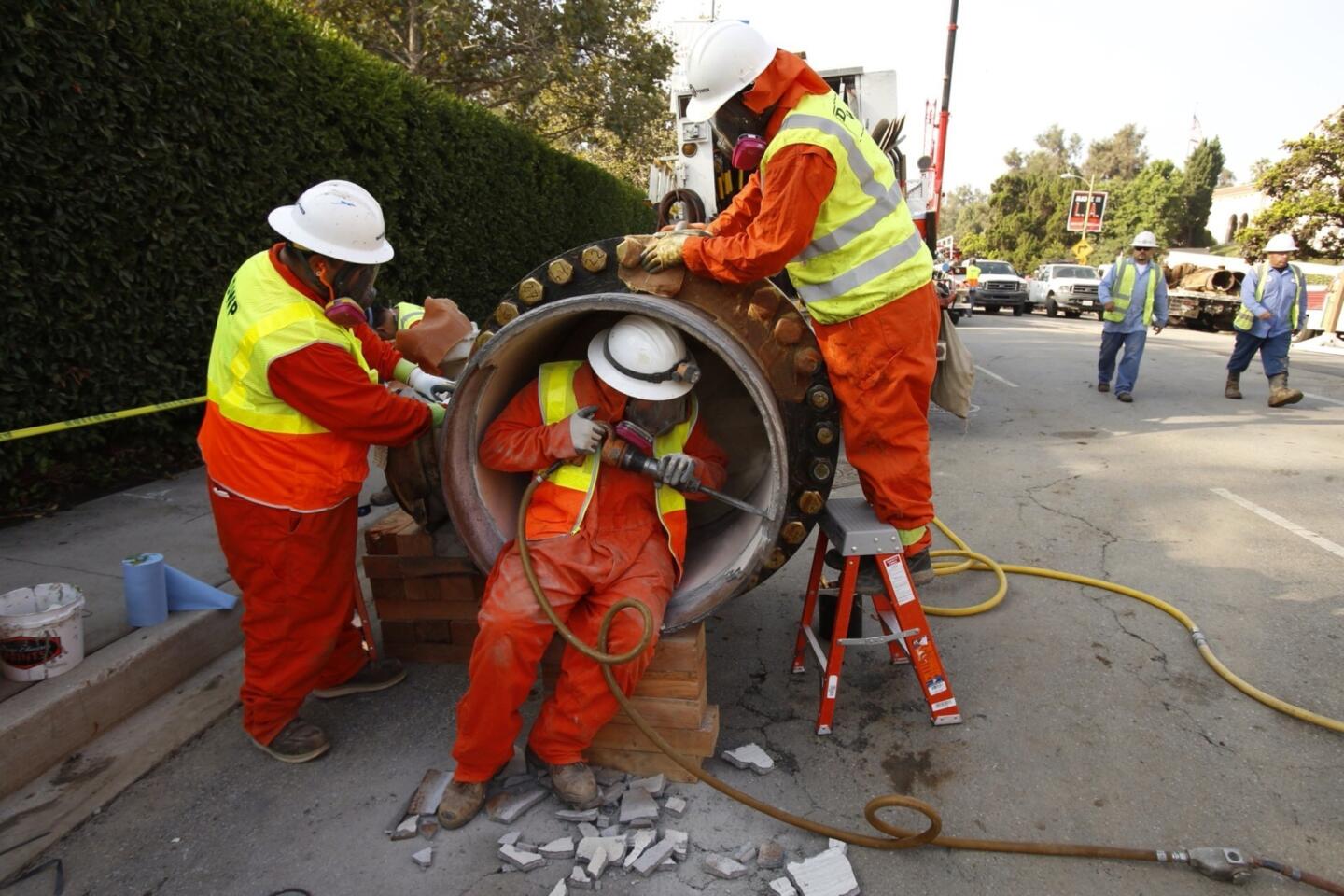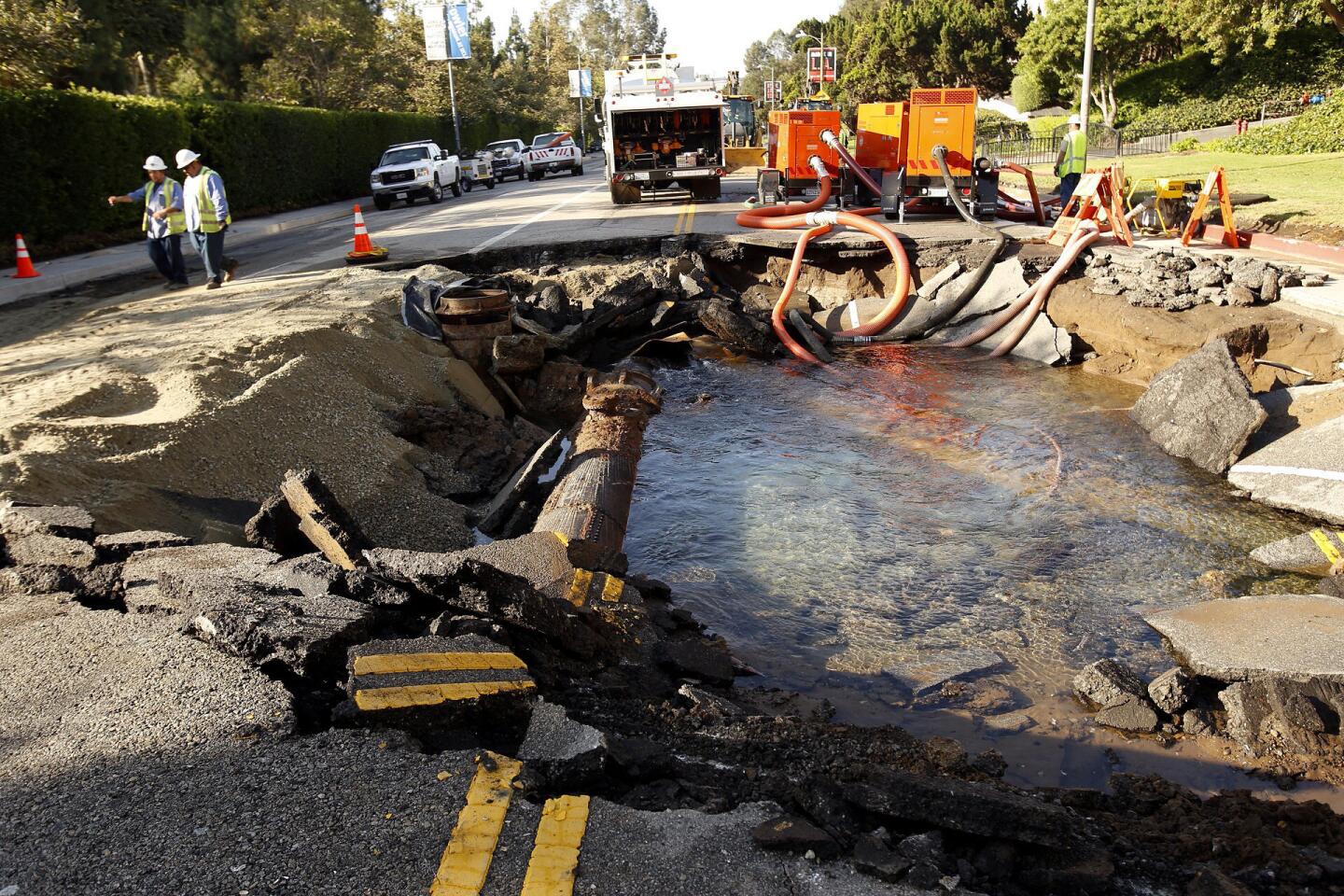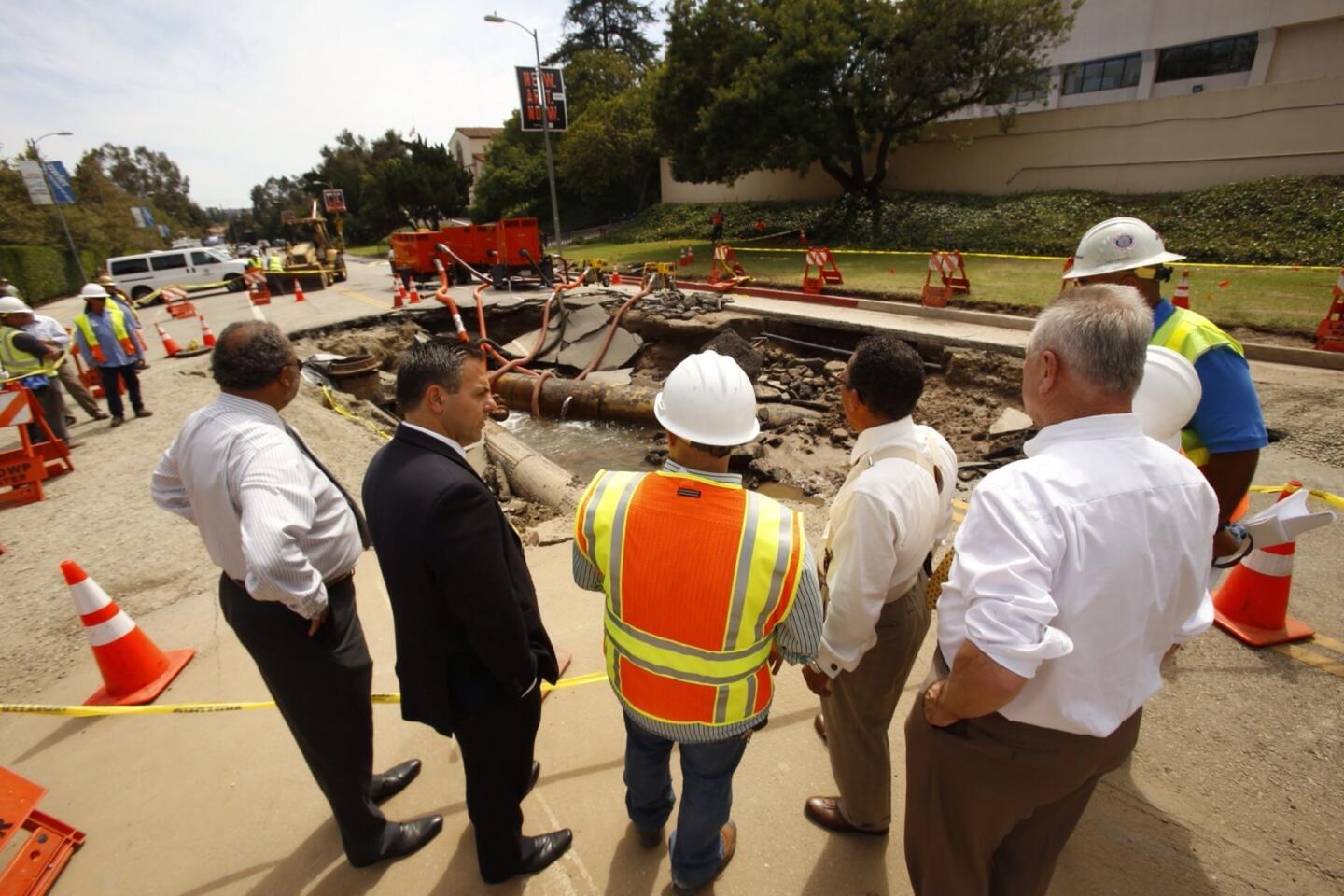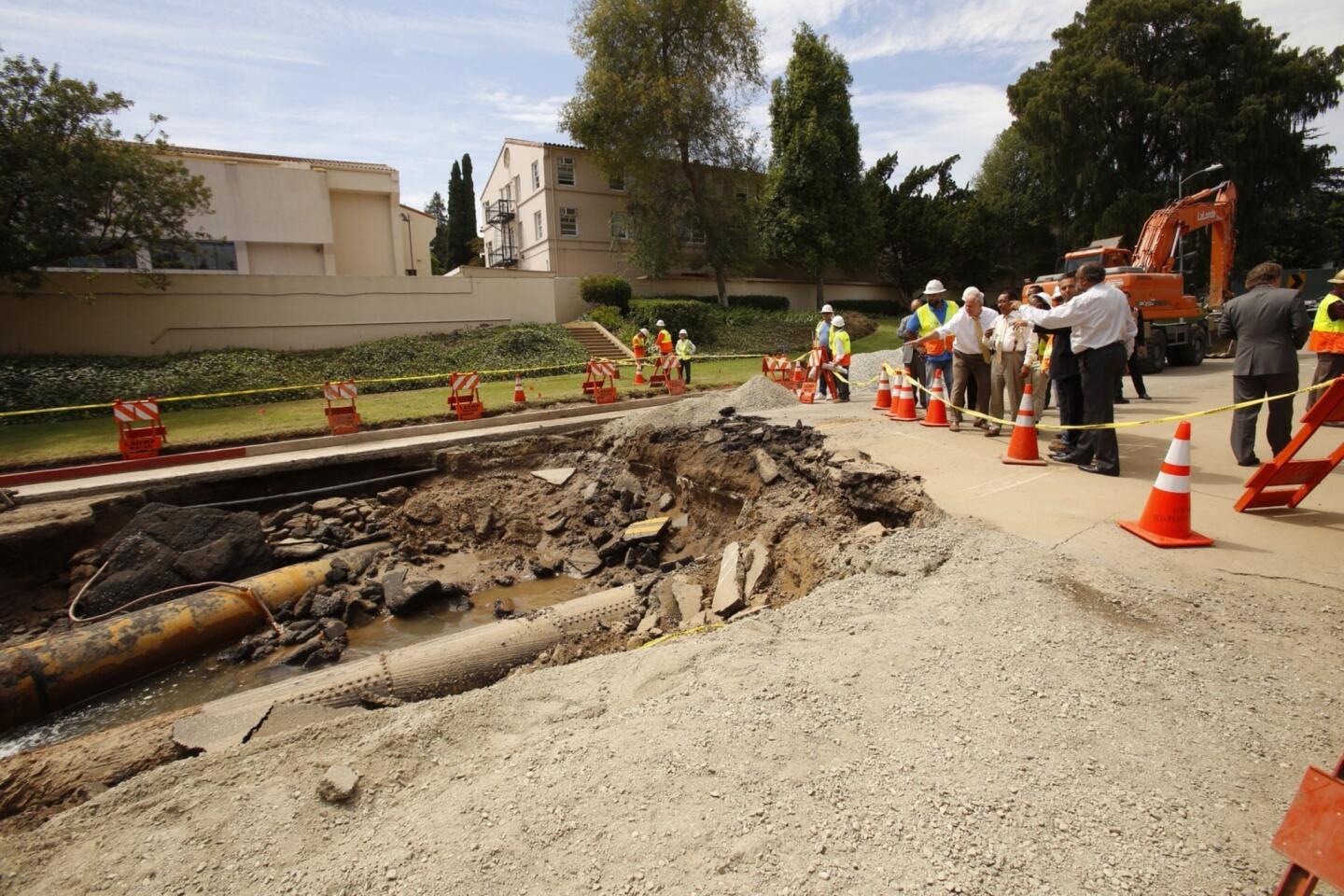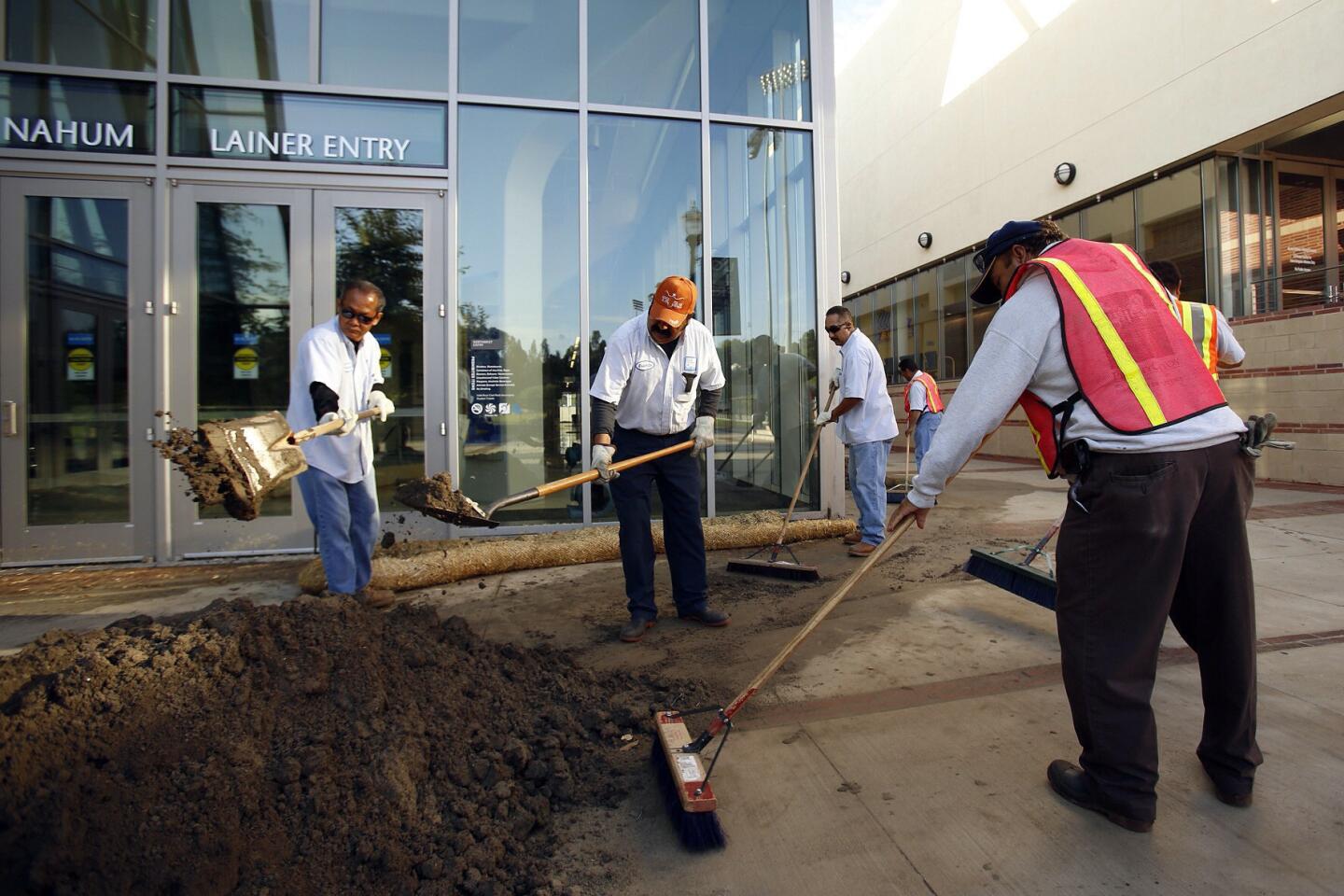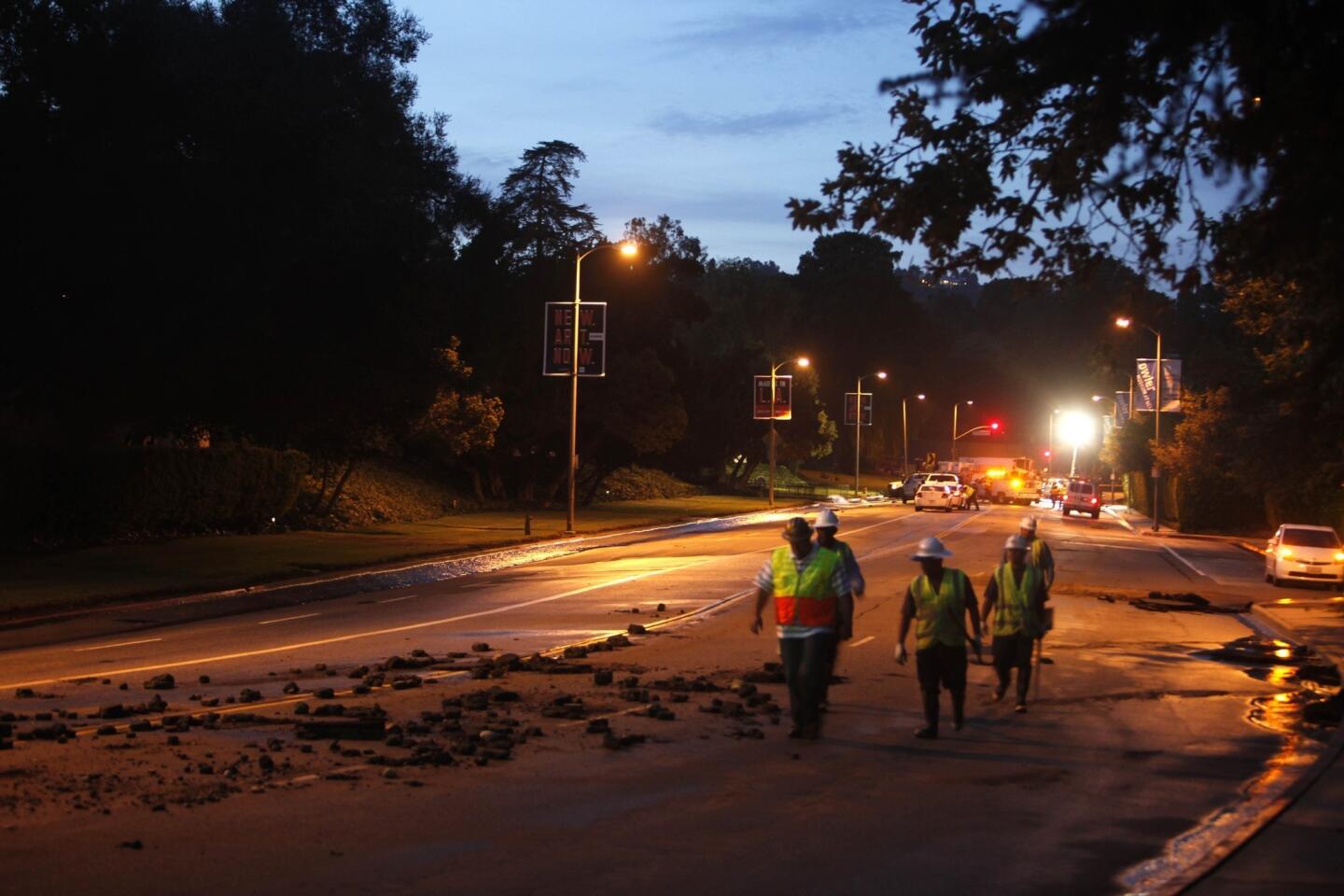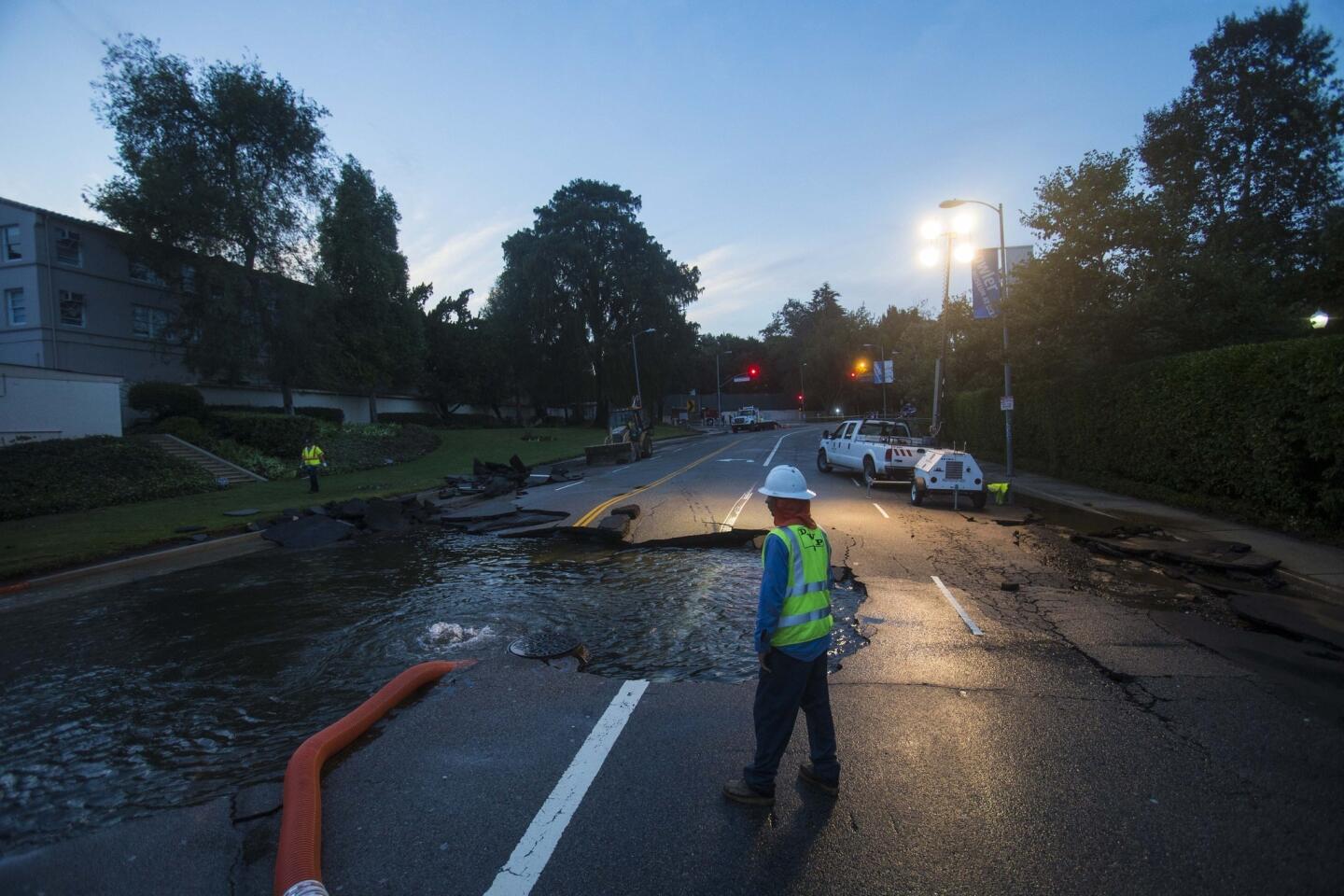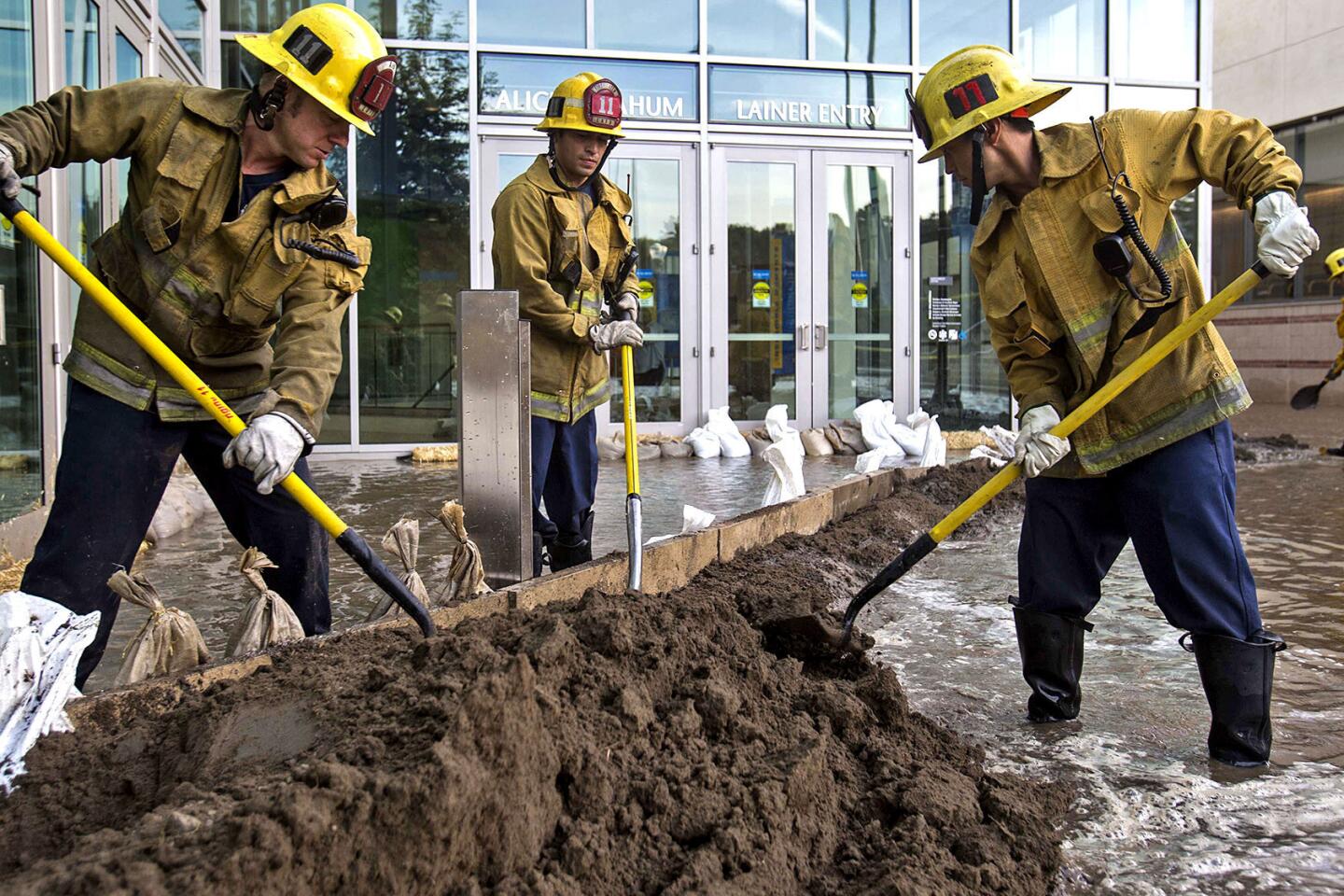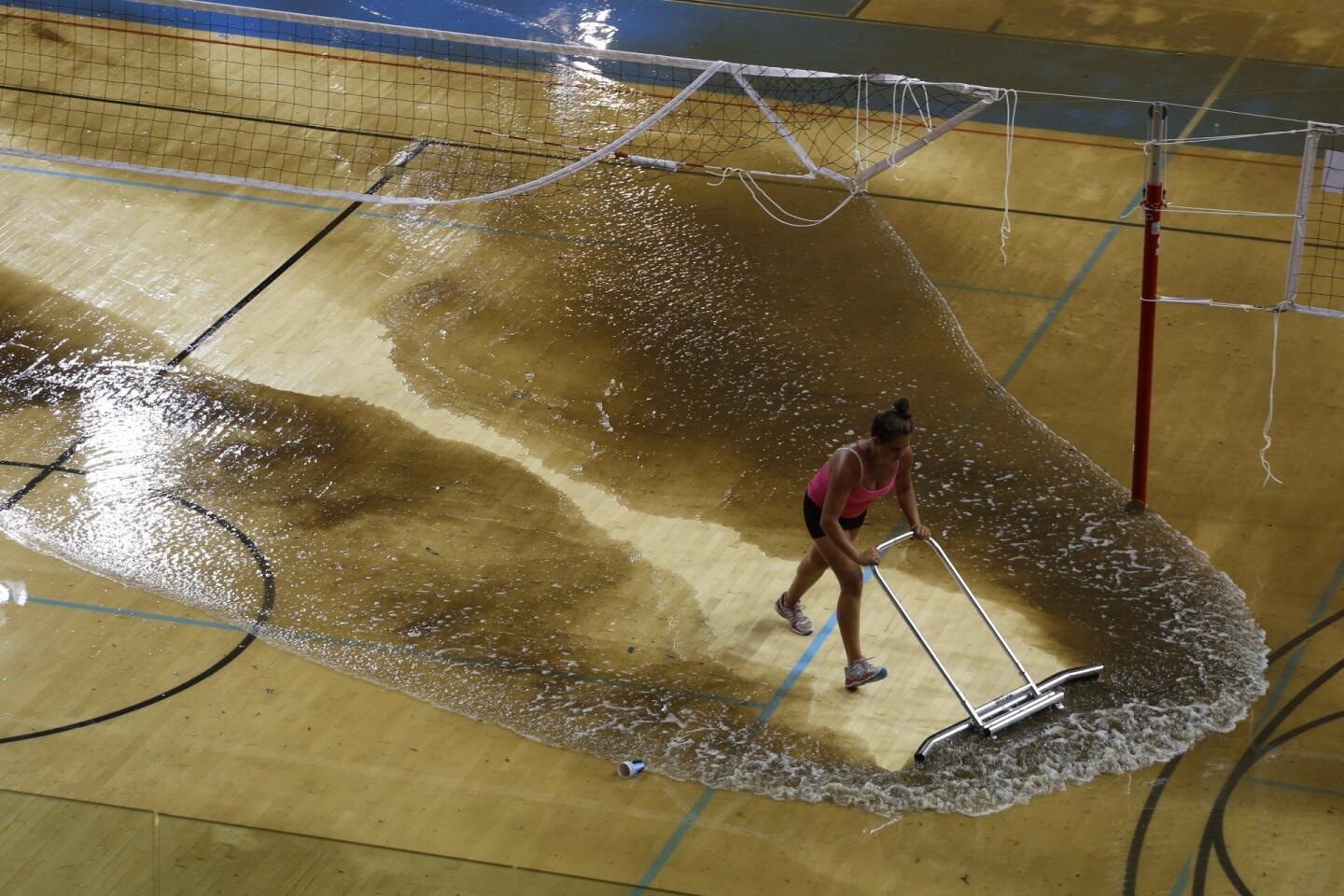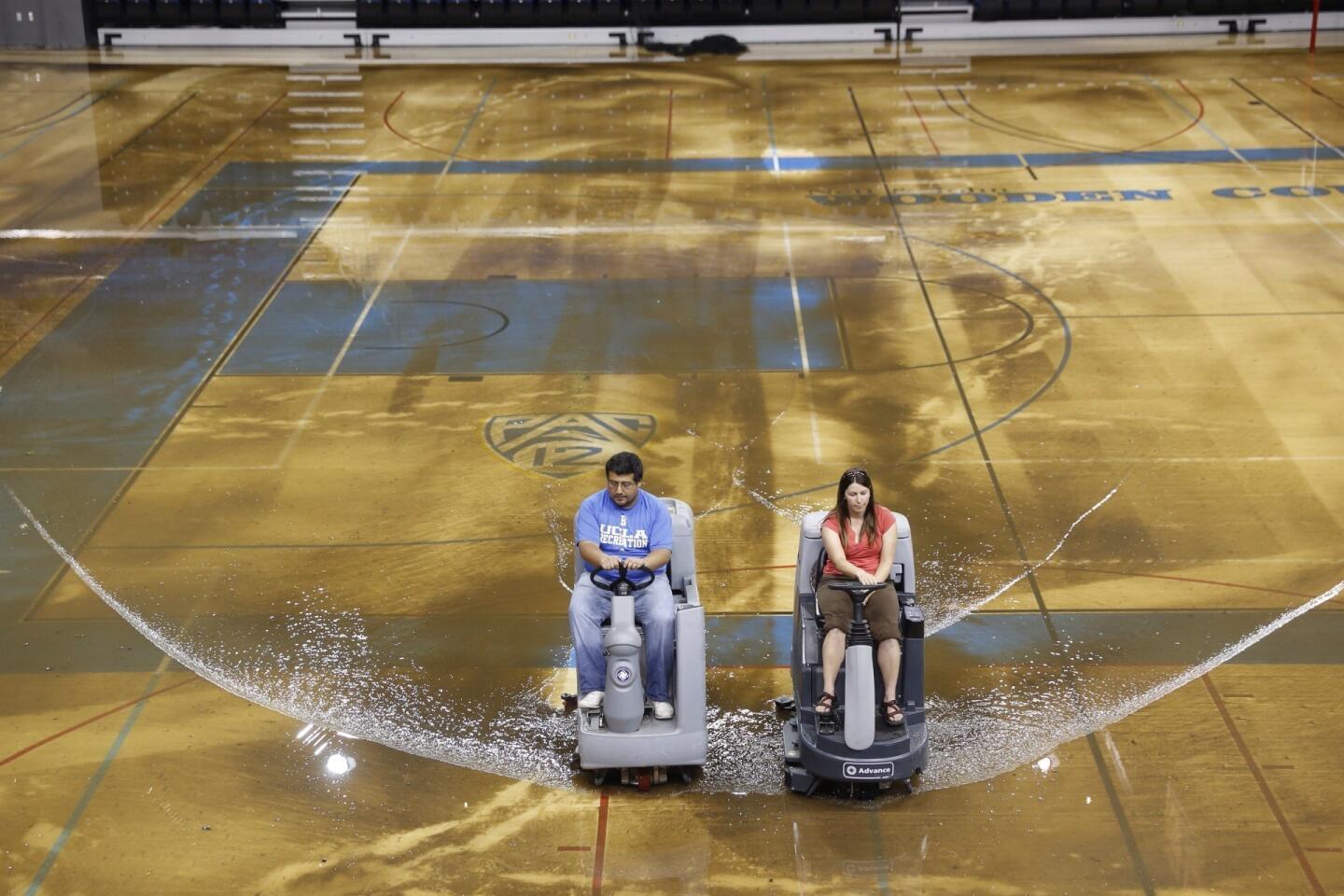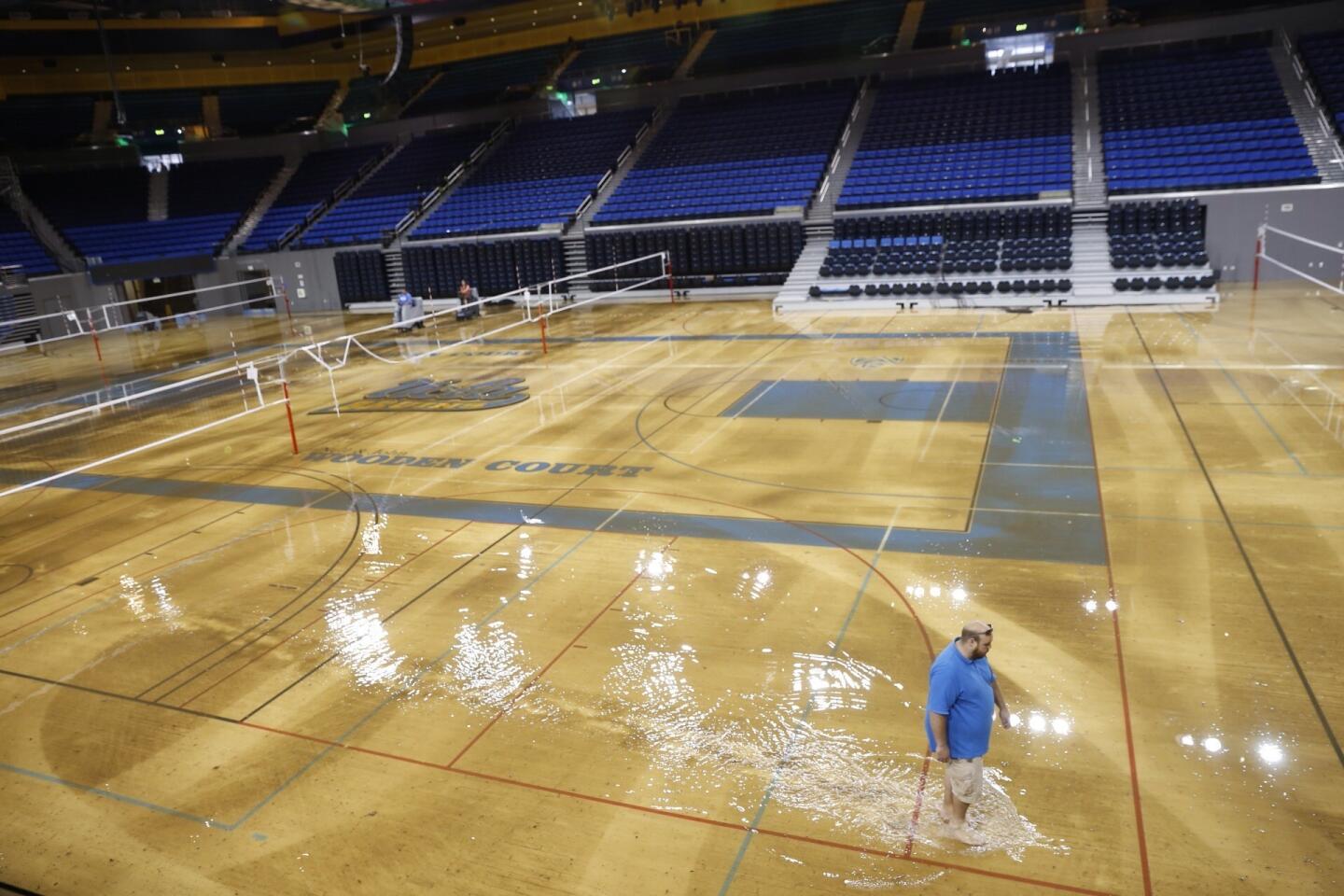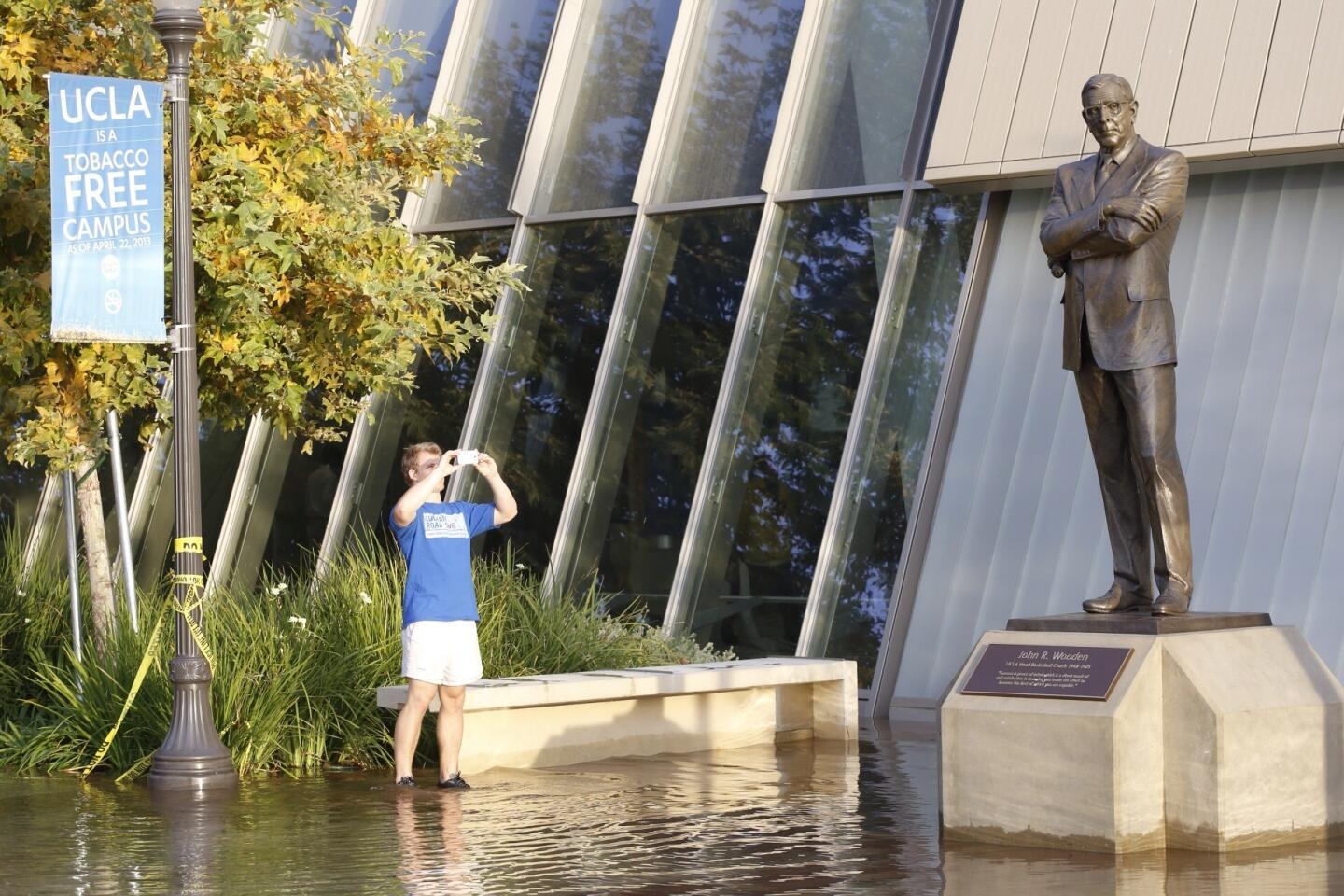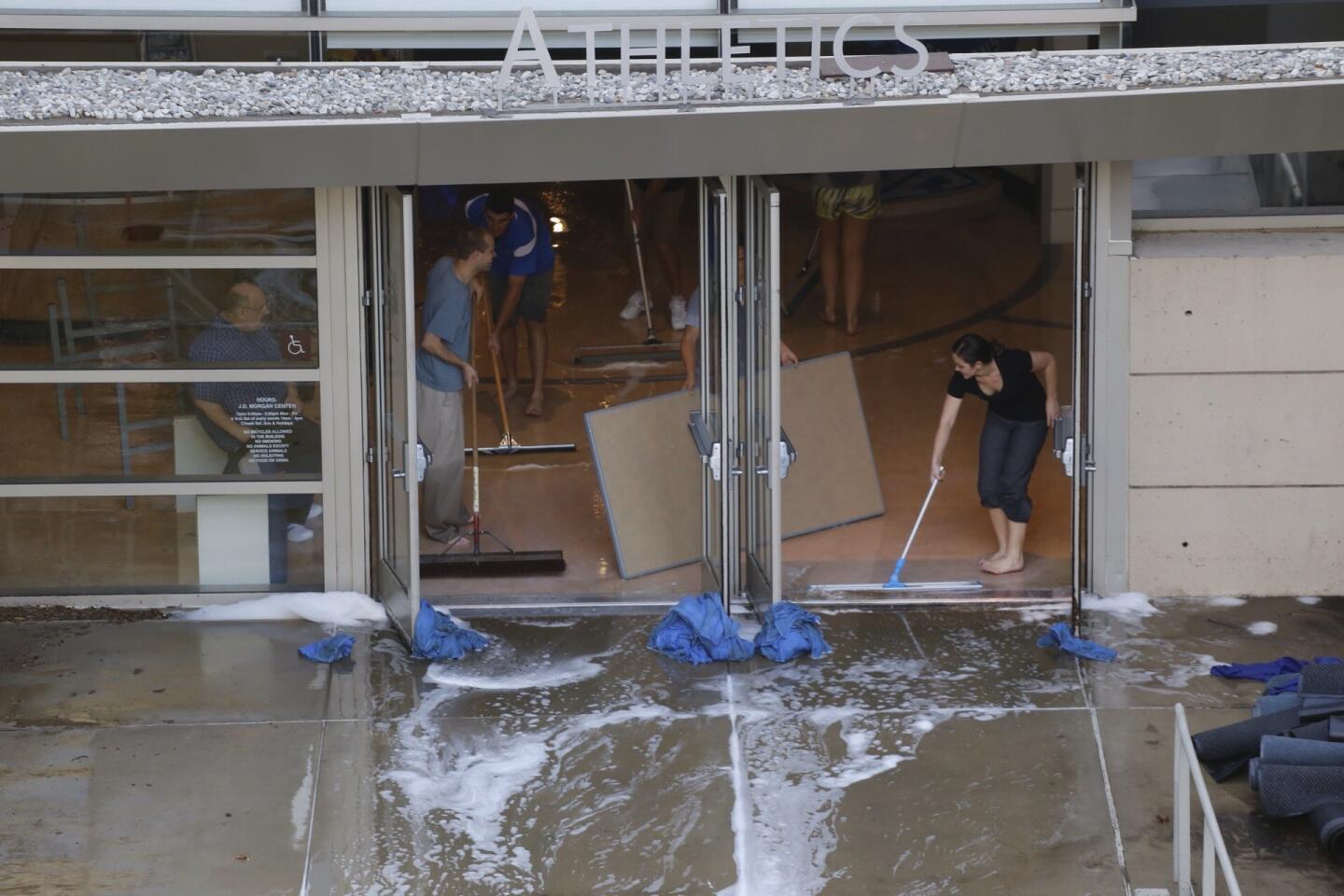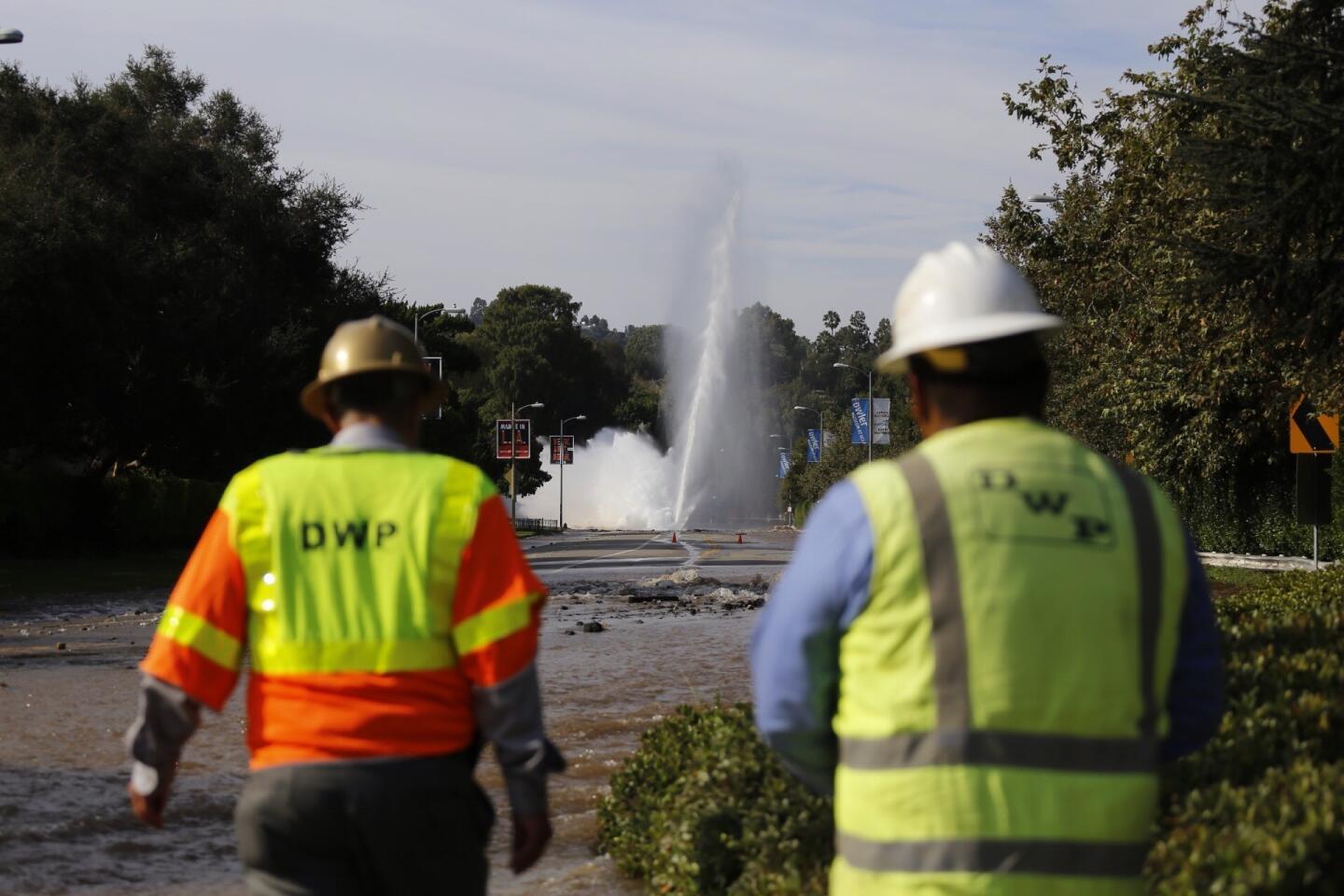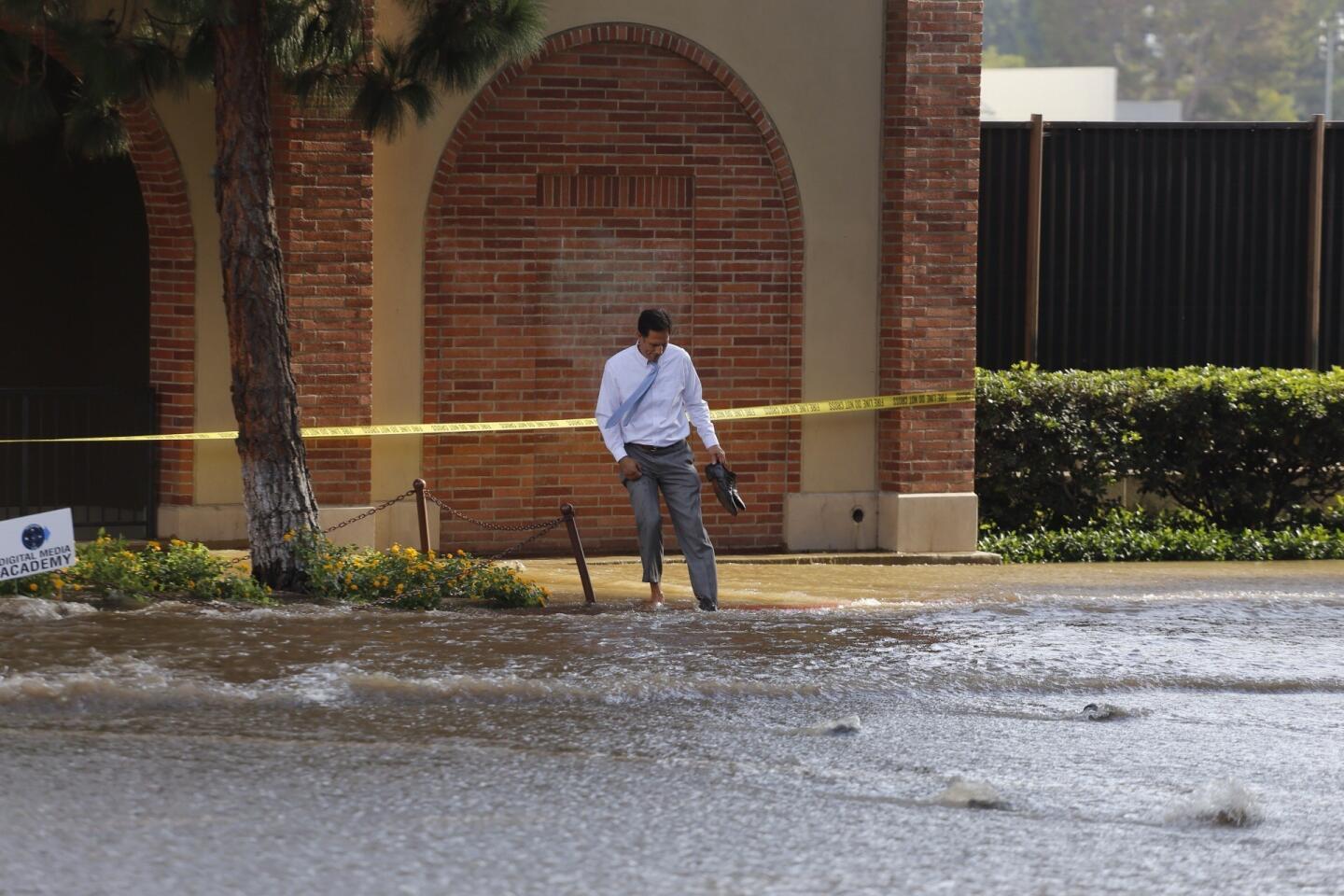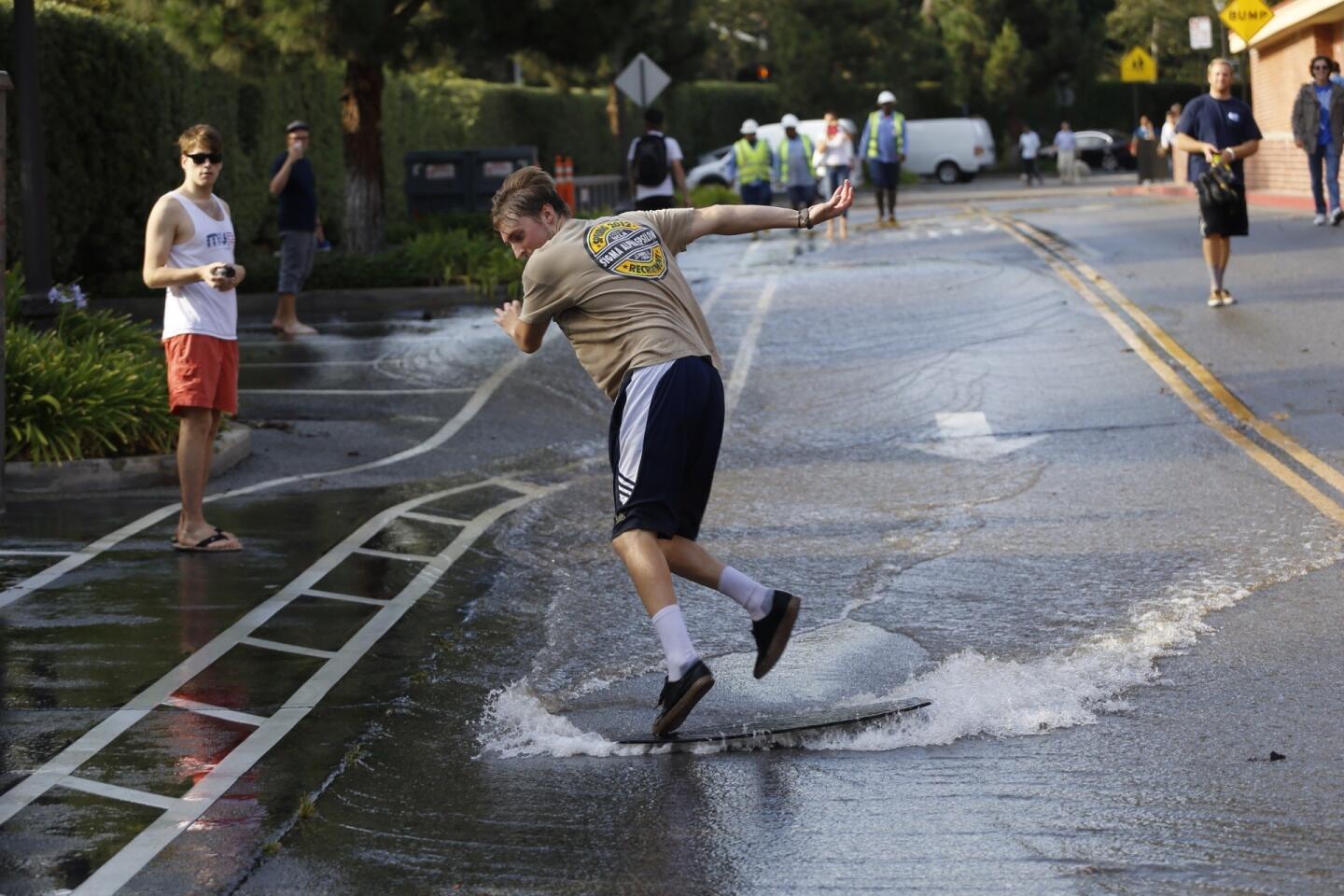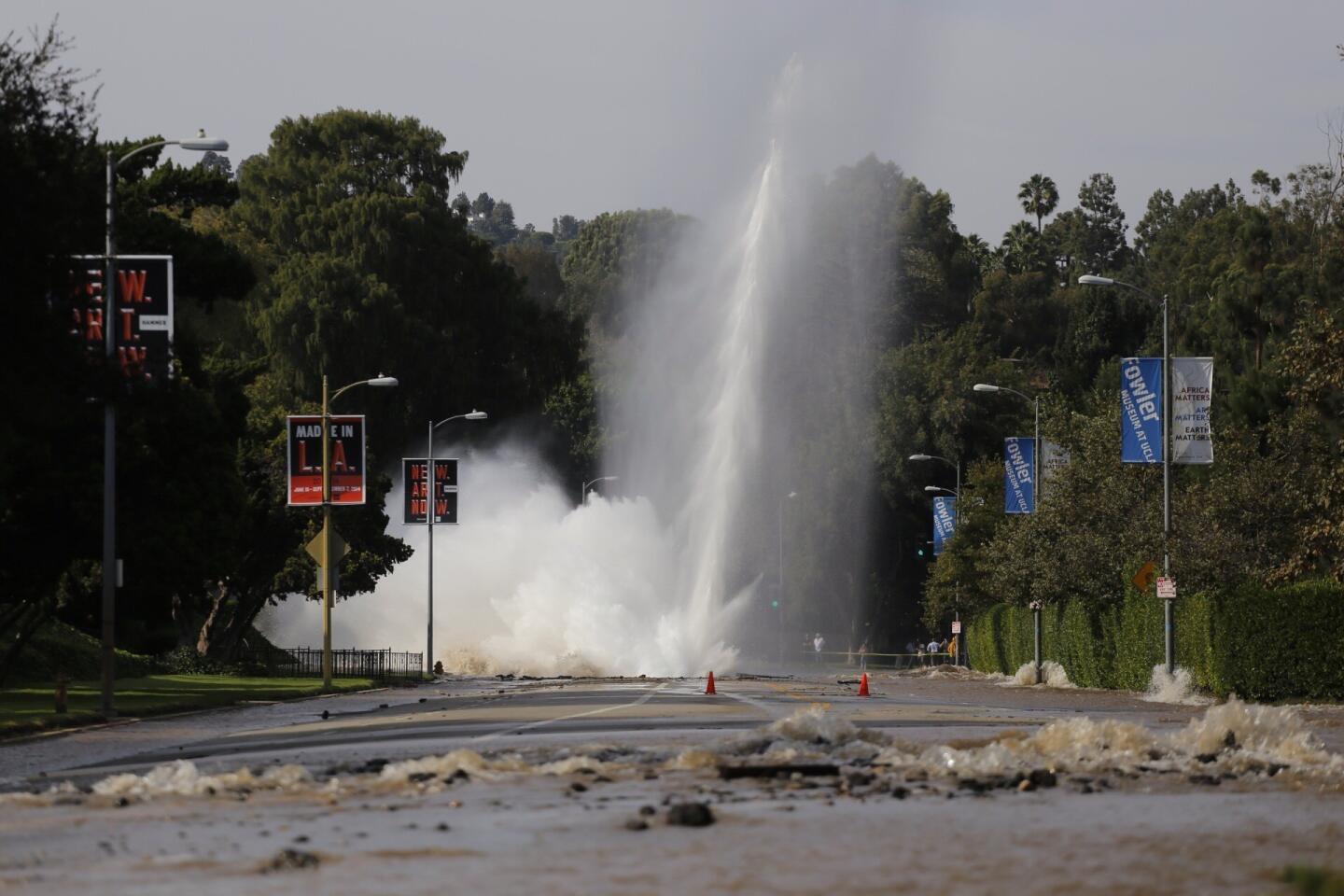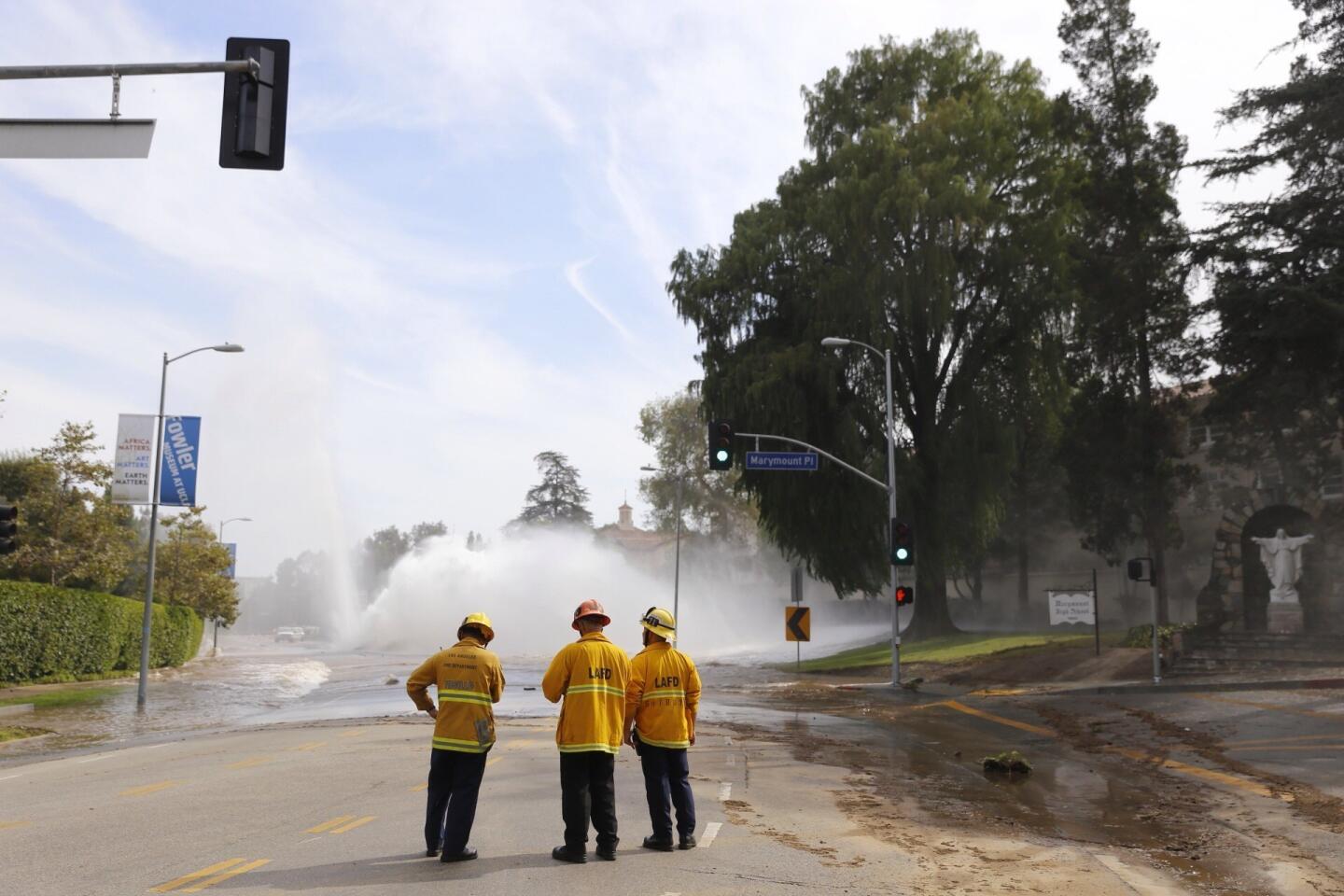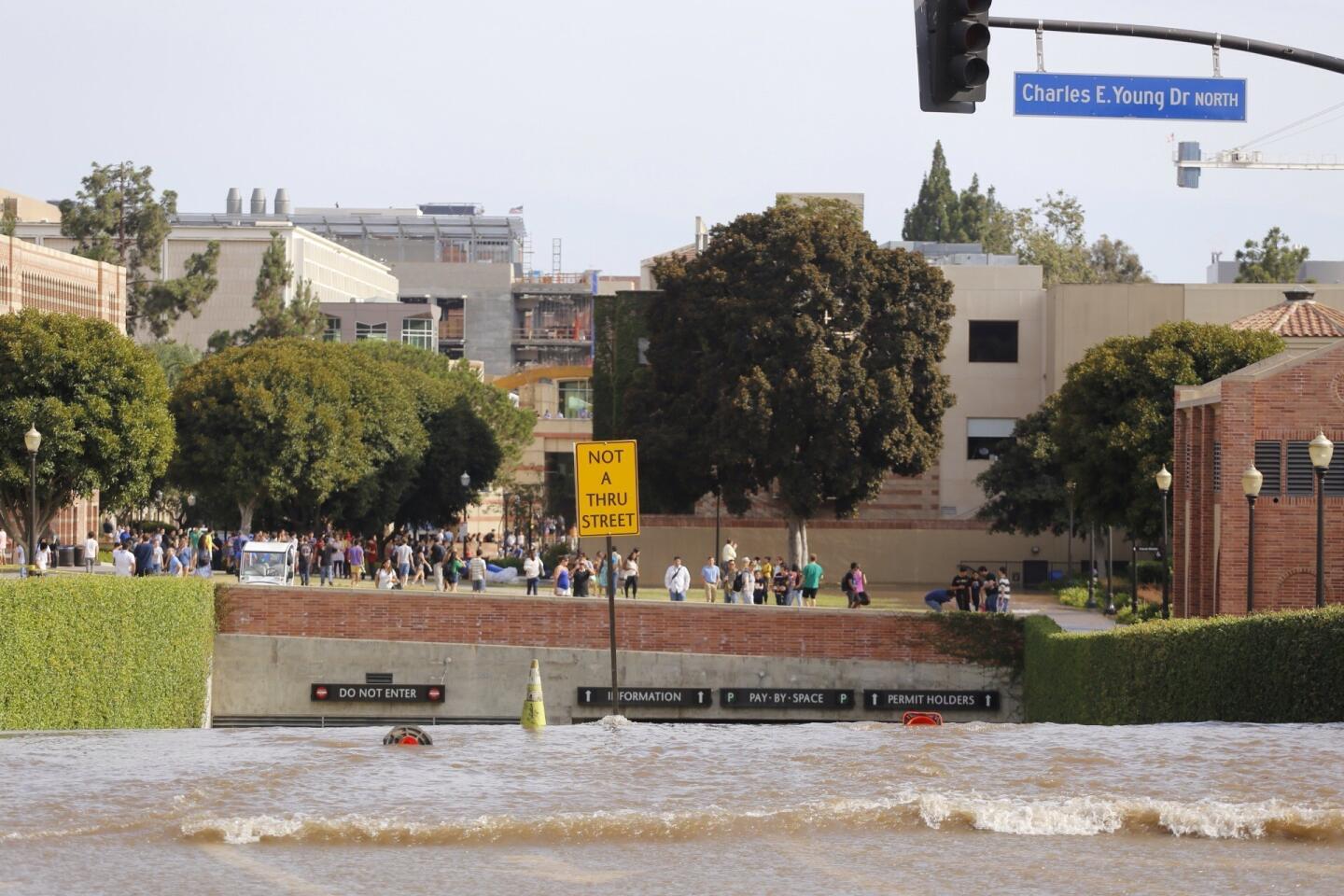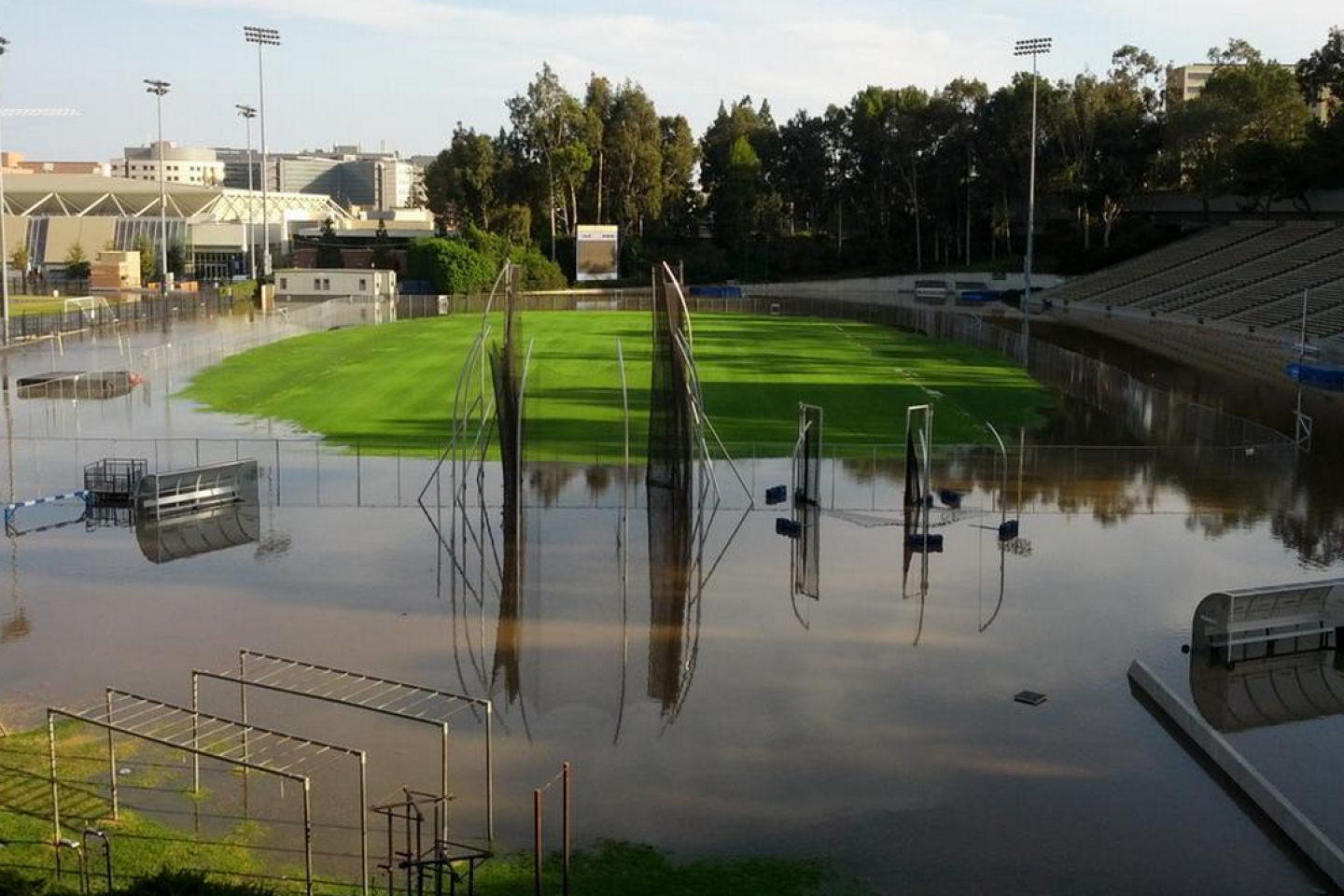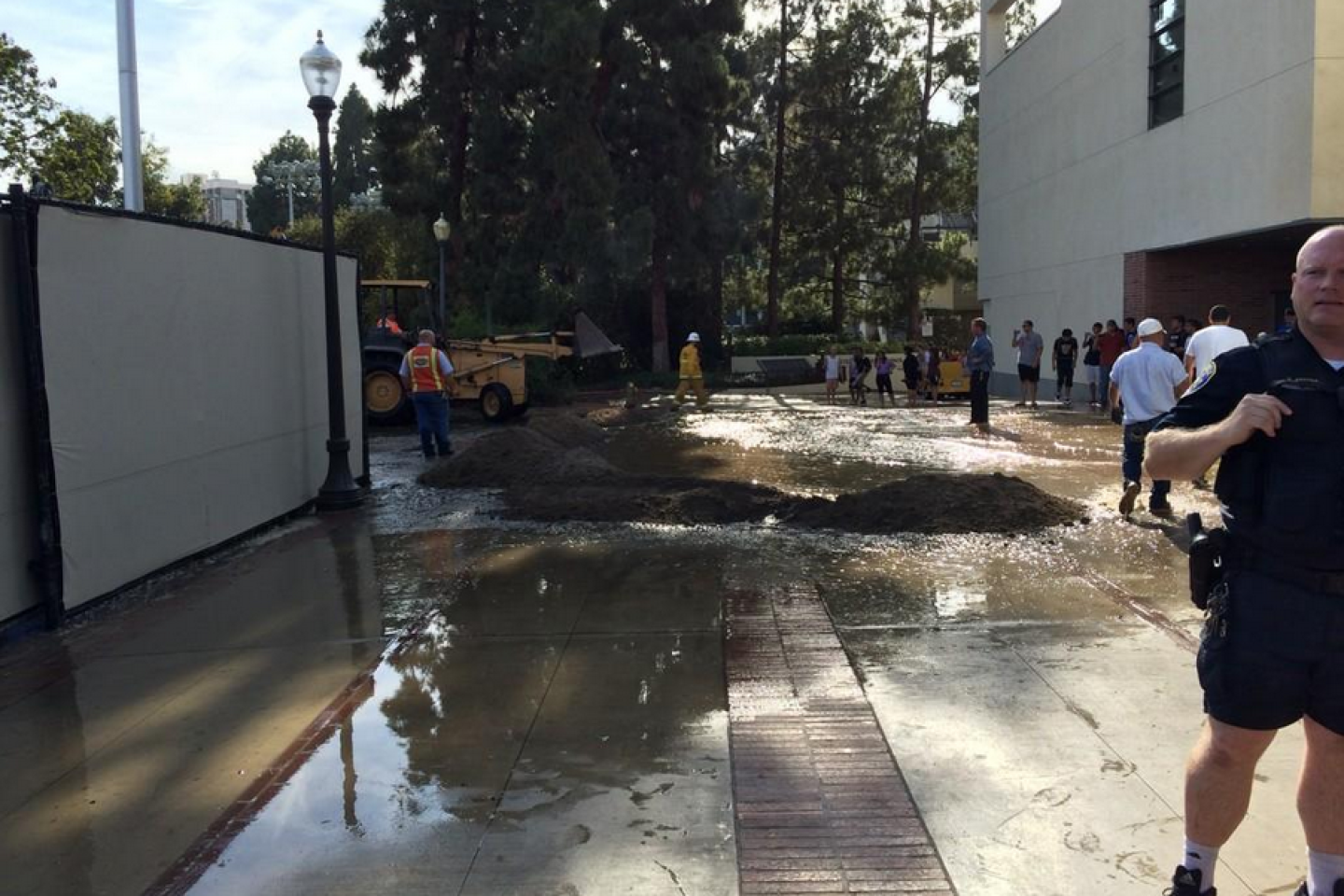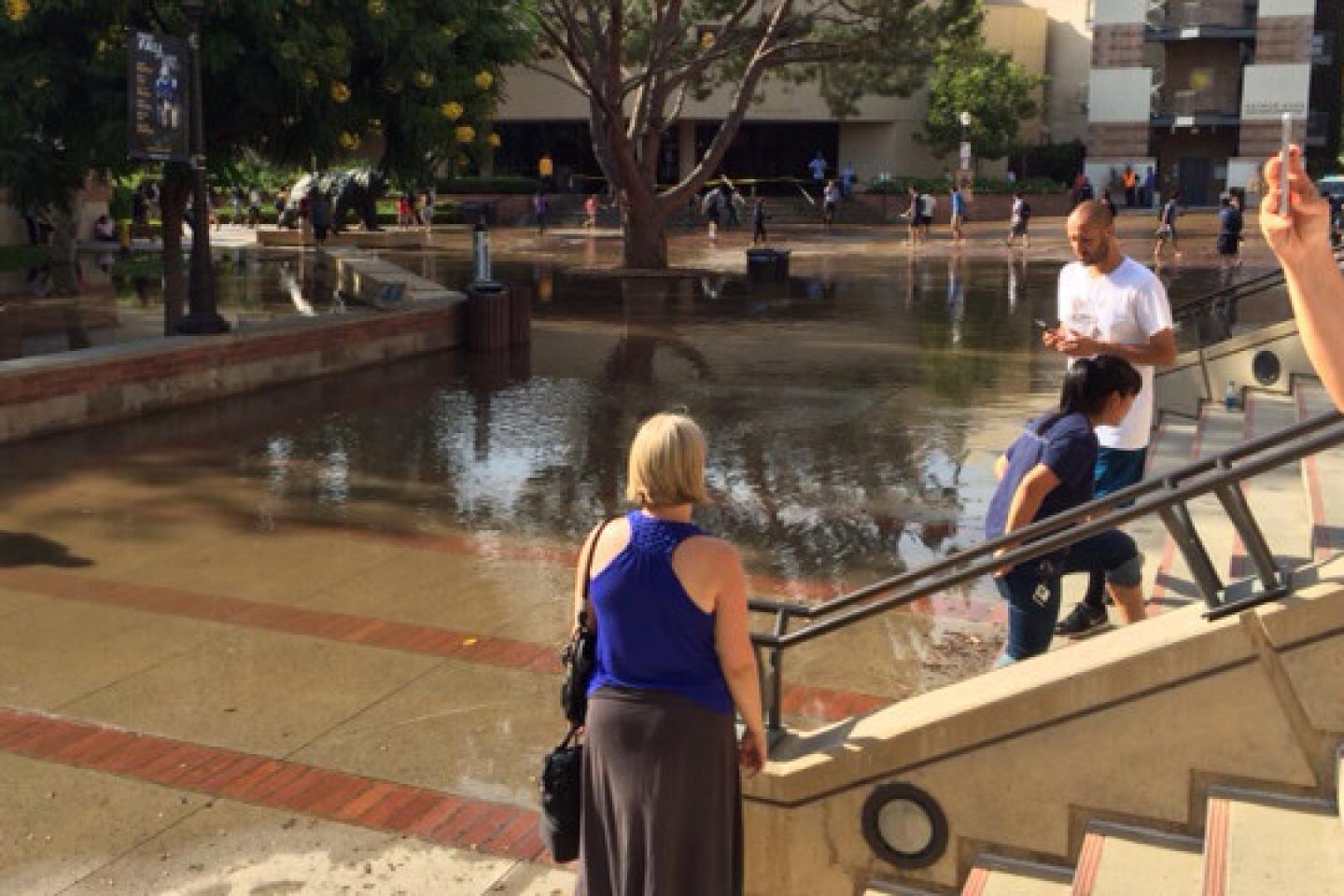DWP may revive abandoned program to test pipes after UCLA flood
- Share via
One week after a ruptured pipe flooded parts of the UCLA campus, the Los Angeles Department of Water and Power is reexamining whether to revive an old program, discontinued years ago, to help detect weakened pipes.
DWP Senior Assistant General Manager Jim McDaniel told the board overseeing the agency on Tuesday that some technology that aims to detect corroded pipes before they leak could turn up a “false positive,” spurring the city to dig up good pipes.
However, he said the department was considering whether to resume a program that pressurizes pipes under controlled conditions, creating “a controlled failure that we can then go in and fix” to identify weak pipes. McDaniel said the program had been curtailed about a decade ago and ultimately was discontinued.
“We’re looking at bringing that back,” McDaniel said, calling it “one of our more viable alternatives.”
The pipe that ruptured under Sunset Boulevard near UCLA had suffered extensive corrosion both inside and out, McDaniel said, and had been welded with a technique that would no longer be used today. At a Monday news conference, Mayor Eric Garcetti blamed the rupture on a “poorly engineered” joint dating to the 1950s.
Long before this break, several studies had singled out Los Angeles pipes that were especially vulnerable, such as riveted steel water lines like the one that broke near UCLA. But the next step is to actually fund those identified repairs, McDaniel told the board.
At its Tuesday meeting, the agency board was not scheduled to tackle the question of how to accelerate the replacement of old pipes, now scheduled roughly every 300 years for water mains. But the dilemma hung in the air after the Sunset Boulevard flooding, which fixed citywide attention on aging pipes.
“We really have to seriously consider spending more money on our infrastructure,” said DWP Commissioner Christina Noonan, pointing out that what the city might have to pay in legal costs from the UCLA break could have been avoided if it had replaced the aging pipe under Sunset Boulevard.
The city ramped up its budgeted spending to maintain or replace water mains from $82 million to $112 million between 2011 and 2014. However, city leaders have said much more investment would be needed to speed the pace of repairs to every hundred years or less.
Board members also wanted to know how the department would try to find weak pipes before the next rupture. “Are we really aggressively now looking to identify those areas that may have this kind of a water break?” DWP Commissioner Jill Banks Barad asked.
Currently, the department looks at a long list of factors to decide which pipes to focus on, including the pressure the pipe is under, its leak history, age, how corrosive the soil is, what kind of damage a rupture could cause and what would be affected nearby, such as hospitals, McDaniel said. It also pays attention to “pretty mundane things” such as paving schedules to avoid digging up freshly paved streets, he added.
DWP General Manager Marcie Edwards said employees had responded “exceptionally” to the rupture last week. But she quickly added that she was mindful of the damage and the effect the flooding had on UCLA students, faculty and employees, and had made claims information available to them online.
At the Tuesday meeting, the board also voted to ramp up the DWP energy efficiency goal from 10% to 15% by 2020 -- a choice that could eventually prod the department to raise rates by an estimated 1.3% over time, department officials said.
The board also opted to offer a slightly smaller amount of megawatts than originally planned -- 15 instead of 20 -- through the latest round of its Feed-in-Tariff program, which enables people to install solar cells and sell the energy back to the city. It opted to postpone making those 5 megawatts available until the next round of solar applications, allowing the city time to address concerns that ground-mounted arrays are being installed without community involvement.
Councilman Felipe Fuentes had earlier asked whether the department could put a pause on approving such ground-based arrays while city officials figured out what they could legally do under the Solar Rights Act. Planning officials have interpreted that law to require them to allow private solar installations unless they harm public health or safety, giving them no latitude for planning concerns.
“This is not a cutback” in the program, board President Mel Levine told solar advocates who came to the meeting to oppose the shift, stressing that the utility would ultimately offer the same wattage under the Feed-in-Tariff program over time. “The total number of megawatts will be the same.”
“This is an effort to ensure the continued success of the FiT program by providing a little breathing space to allow us to deal with an unanticipated problem,” Levine concluded.
Follow @latimesemily for what’s happening at Los Angeles City Hall
More to Read
Sign up for Essential California
The most important California stories and recommendations in your inbox every morning.
You may occasionally receive promotional content from the Los Angeles Times.
